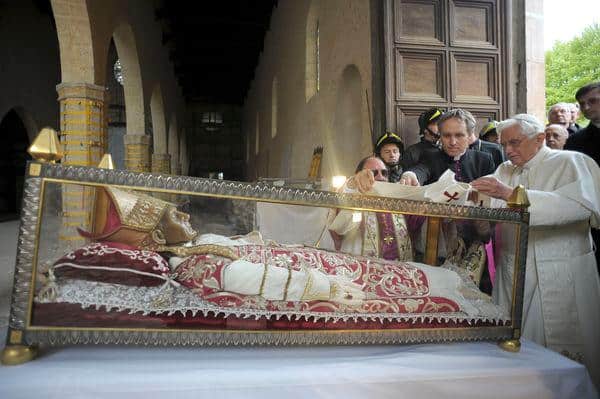This week Tuesday marks an important anniversary, as exactly one year will have passed since Pope Benedict XVI shocked the world with his decision to relinquish the Petrine ministry. He became the first Pope in centuries to step down. When the news broke in the early morning hours here in Milwaukee, it was one of the most surreal moments I can remember. Popes retiring? I knew it was technically possible, but would I ever see it happen? Never! Popes die. They don’t retire. It shook me to the core. What was happening? Why was this happening? Among mortals on earth, Benedict was my strongest point of reference in these difficult times, and he’s going away?! Who would fill his shoes in such a critical time in history as this, when the “dictatorship of relativism” reigns supreme? In a way, it was a similar feeling to when Pope John Paul II died. I was living in Rome at the time and the sense of loss was enormous. Similarly, the sense of loss just one year ago was, mutatis mutandis, very sharp. That said, Pope John Paul II’s death was expected. Pope Benedict’s resignation was not.
Looking back, commentators have since discerned hints of what Benedict was up to. He elevated his personal secretary, Msgr. Georg Gänswein, to archbishop shortly before stepping down. He made a pilgrimage to the tomb of Pope Saint Celestine V (1215-1296), who himself resigned from the papacy. In a moving gesture that brings tears to the eyes, Benedict laid a pallium over his predecessor’s class enclosed coffin. Also, in a 2010 interview, Pope Benedict noted that a pope should resign if he feels he is not up to the task, physically, mentally, etc. In light of his actions and words, Pope Benedict’s decision isn’t so shocking. But that’s only in hindsight. In real-time, the consolations were few and far between.
In many ways, Cream City Catholic is a testament to Benedict’s papacy. Throughout his reign, Pope Benedict demonstrated a high degree of concern for the importance of authentic beauty. Whether painted on canvas, chiseled in stone, knitted in fine cloth, intoned in chant or, perhaps most importantly, witnessed in the mysterious sanctum of sacred liturgy itself, Benedict reminded an increasingly banal and iconoclastic society of beauty and truth, and the ultimate Source of both. Here at CCC, we try in our own modest way to do the same thing.
These are trying times for Catholics. Narcissism and decadence are perhaps our most conspicuous sociological pathogens, obscuring beauty and silencing the stabilizing voices of reason and religion. Anyone who caught even a glimpse of the obscene Grammy Awards a few weeks ago knows what I’m talking about. Jake and I were with some friends at a restaurant downtown and it was playing on the televisions perched behind the bar. Dante’s Inferno immediately came to mind… In the face of all the disorienting noise and filth vomited forth by a sick culture, the saintly, serene countenance and steady hand and intellect of Pope Benedict offered a rock-solid, pure alternative. Beauty, order and holiness are attractive. Disorder, dissonance and egocentrism are repulsive.
Thank God that Pope Emeritus Benedict XVI is still with us, living, as he himself described it, “like a monk”. He prays incessantly for his joyful successor, and for all of us. He is hidden from the world, but very much present in the Communion of Saints.



